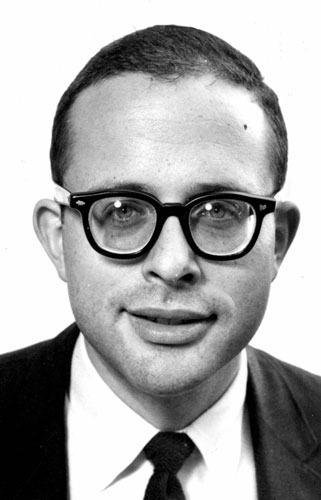Looking back at the most important moments in San Diego State history from the late 1950s through the 1990s yields many prominent names. One name in particular appears time and again whenever a monumental change is coming to SDSU: Harvey Goodfriend.
Goodfriend’s journey of leadership at SDSU began in 1956 with a loss. That year the business administration junior was defeated by Norman Brinker for the A.S. presidency. That defeat did nothing to quelch Goodfriend’s enthusiasm for student government and he went on to serve alongside Brinker as the senior class representative during the implementation of the first-ever mandatory student fee.
In 1961, Goodfriend came back to become the general manager of Aztec Shops and, until 1981, A.S. During his time at Aztec Shops he grew the nonprofit commercial auxiliary into the largest in the California State University system, according to the U-T San Diego. The newspaper also reported Goodfriend helped start the CSU Auxiliary Organizations Association.

The impact from his leadership in A.S. was just as great. In 1963 he was instrumental in passing the student-approved fee to build Aztec Center, the first permanent student union on a CSU campus.
In 1971, through Goodfriend’s leadership A.S. created the Campus Childcare Center to allow students, faculty and staff with young children to work, teach and attend classes.
“A.S. makes decisions based on the needs and demands of the student body,” Susan Heiser said in an A.S. website about the organization’s history. “When a need for childcare was determined, A.S. found a solution.”
Goodfriend didn’t stop there, and four years later he created a partnership with the University of California, San Diego and the City of San Diego to create the Mission Bay Aquatic Center in Mission Bay Park. Today the aquatic center allows students to take unique exercise and nutritional science classes in everything from kayaking to surfing.
In 1978, Goodfriend engineered the leasing of what is today the Cal Coast Credit Union Open Air Theater, improving it to welcome some of the biggest acts of the day.
He was always willing to push A.S. forward. For example, when ATMs were still in their infancy he bet on the new technology, making SDSU the first school in the CSU system to feature the cash machines.
Goodfriend left A.S. in 1981 and retired from Aztec Shops in 1999, yet his indomitable spirit and love for SDSU led him to leave his mark in all aspects of campus life. According to SDSU NewsCenter, he revitalized the Alumni Association in just a few years, taking it from a small organization of a few hundred members to more than 10,000 members.
Through all the years, Goodfriend never lost the youthful energy of the senior class representative. He continued teaching an entrepreneurial management class as a part-time professor in the business department. After his death in 2008, the U-T San Diego talked to one of his friends and colleagues, Donna Tusack.
“He really was committed to the students at San Diego State,” Tusack said to the newspaper. “He had a love for the excitement that you feel on a campus. He used to say that students’ youthfulness was infectious.”
At a memorial for Goodfriend on campus, attendees were asked to wear Hawaiian shirts and instead of bringing flowers, make a donation to the Harvey Goodfriend Aztec Shops Scholarship in his honor.
Photo courtesy of SDSU Library Archives




